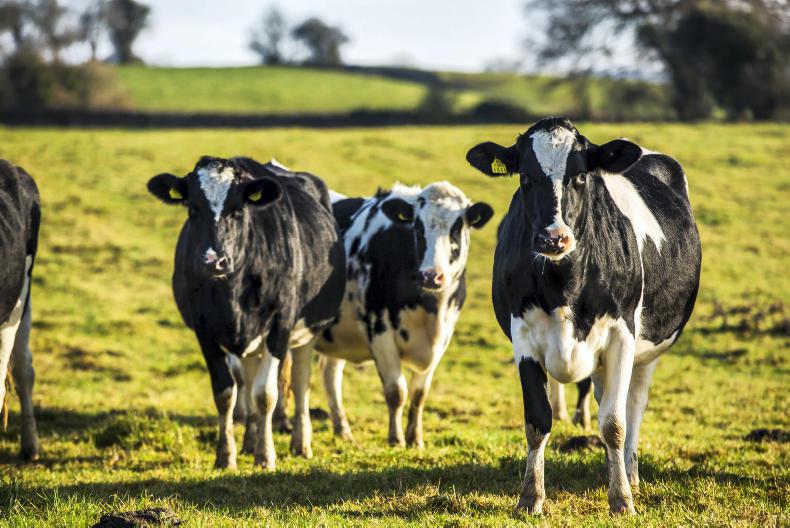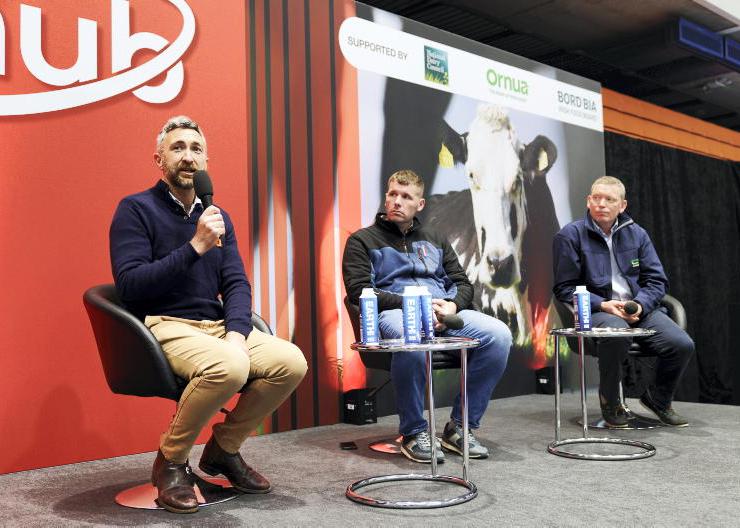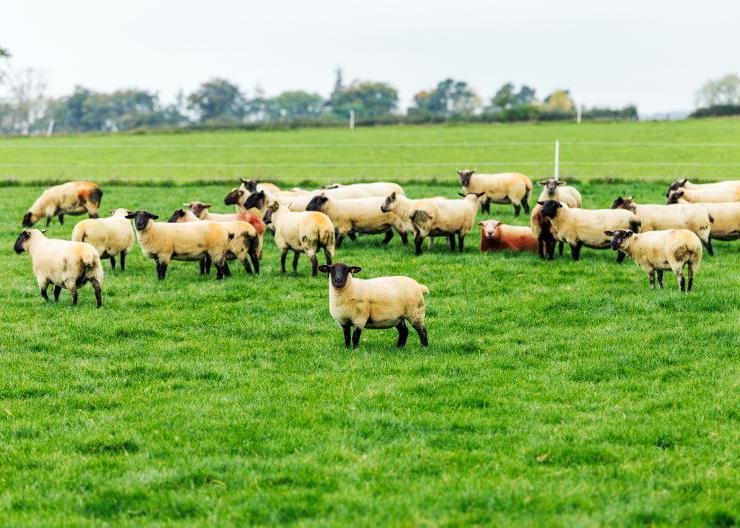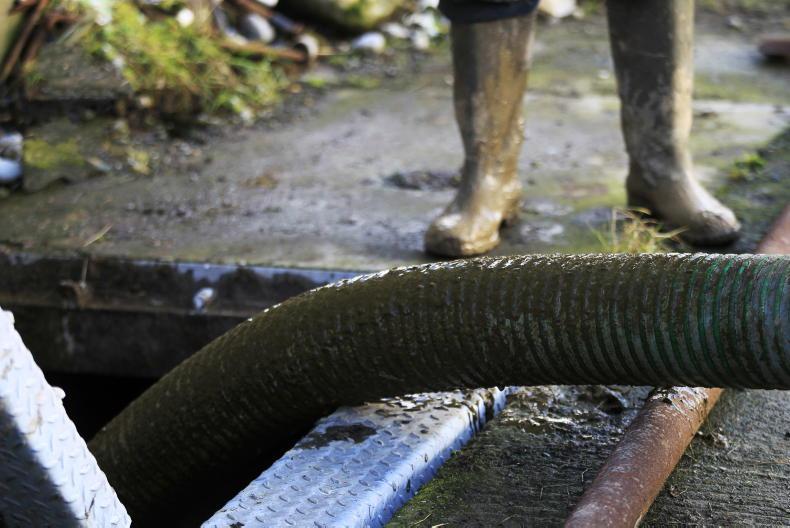Grass quality continues to be the biggest challenge on many farms across the country.
Most grass varieties have passed their heading date in late May and early June. At this time of year, once grass goes past the three-leaf stage it will go into the reproductive phase and produce a seed head. Also it is common at this time for a plant under stress to go to seed at an earlier stage of the growth cycle.
The plant must produce a stem to support the seed head and this greatly reduces the feed quality of the grass. The stem is high in fibre which is far less digestible than the leaf content of the plant, which is best at a pre-grazing cover of 1,400kg DM/ha to 1,500kg DM/ha.
Due to the poor palatability of the stem, graze-outs will suffer in paddocks with a high stem content. As a result of poor feed quality and poor palatability in grass at this stage, production (kg of milk solids or daily liveweight gain) will suffer.
Growth around the country has varied a lot this week as some farms are starting to see growth slowing due to a moisture deficit. A soil moisture deficit of 25mm to 35mm will start to affect growth rates. Soil moisture deficit along the northwest and southwest coast ranges from 5mm to 20mm but elsewhere it ranges from 20mm to 50mm, which explains the wide variation in growth rates.
As rain is forecast for most parts of the country later this week and into next week, growth rates are expected to stabilise. On farms where soil moisture deficit continues to disrupt growth, farmers must react quickly. Make sure growth does not fall below demand. Start by reducing stocking rate by grazing paddocks marked for silage or increase supplementation rate.
Swardwatch
Target pre-grazing covers of 1,400kg DM/ha to 1,500kg DM/ha.On dairy and beef farms, target a C/LU of 160kg DM/LU-180kg DM/LU and 12 to 14 days ahead respectively.If you are in a soil moisture deficit and growth is slipping, avoid cutting paddocks for bales or topping.Don’t let demand exceed growth. Reduce stocking rate or increase supplementation.Topping should only be done as a last resort and if so it must be done the day animals leave the paddock to avoid hitting regrowths.
Barry O’Reilly – Teagasc Ballyhaise
Grass quality is far from ideal at the minute. A lot of paddocks have gone to seed in the last couple of weeks and as a result of this there is a lot of stem present. We have done a good bit of tidying up via bailing but there is still a nice bit to be done. Grass quality will improve a lot once these paddocks are ready to be grazed again. We may need to go in with silage to bridge the gap if things run tight. We will assess this again later in the week. We scanned the heifers last week and we were disappointed with a 45 per cent conception to first service with sexed semen.
Stocking Rate (cows/ha): 3.5Growth Rate (Kg/day): 65Cover/LU (kg/lu): 145Yield (L/cow/day): 23.5Fat %: 4.40Protein %: 3.55Milk Solids (kg/cow): 1.92Supplement fed (kg/cow/day): 1Philip Ruttle – Rathkeale, Co Limerick
Stocking rate has dropped over the last week with silage ground coming back in. Quality has been a struggle lately but graze outs have improved as pre grazing covers are closer to target. I plan to take out a couple of paddocks for bales. Covers on these paddocks are between 1,400kg DM/ha and 1,500kg DM/ha so I will hold of cutting them until we get rain. I am following the cows with 19 units of Nitrogen per acre in the form of 18:6:12. Breeding started on 22 April and we submitted 97% in the first three weeks. We are doing 100% AI. In the last couple of weeks we have had a small number of long repeats which the vasectomised bull is picking up.
Stocking Rate (cows/ha): 3.31Growth Rate (Kg/day): 86Cover/LU (kg/lu): 198Yield (L/cow/day): 22.7Fat %: 4.48Protein %: 3.68Milk Solids (kg/cow): 1.91Supplement fed (kg/cow/day): 2Sean Cummins – Kilmacthomas, Co Waterford
We are in our eight week of the breeding season and things are going well. Our three week submission rate was 88 per cent. After six weeks we had a non-return rate of 73 per cent. The Friesian stock bulls were left off with the herd at the start of week seven and will be taken away at the end of week twelve. Our pre-grazing covers are around 1,500kg DM/ha and we have shortened the rotation length to 17 days in order to maintain grass quality. There are six out of 22 paddocks out for silage at the minute. We are following the cows with 23 units of nitrogen per acre in the form of CAN plus sulphur.
Stocking Rate (cows/ha): 4.62Growth Rate (Kg/day): 94Cover/LU (kg/lu): 138Yield (L/cow/day): 23.5Fat %: 4.39Protein %: 3.63Milk Solids (kg/cow): 1.94Supplement fed (kg/cow/day): 2
Grass quality continues to be the biggest challenge on many farms across the country.
Most grass varieties have passed their heading date in late May and early June. At this time of year, once grass goes past the three-leaf stage it will go into the reproductive phase and produce a seed head. Also it is common at this time for a plant under stress to go to seed at an earlier stage of the growth cycle.
The plant must produce a stem to support the seed head and this greatly reduces the feed quality of the grass. The stem is high in fibre which is far less digestible than the leaf content of the plant, which is best at a pre-grazing cover of 1,400kg DM/ha to 1,500kg DM/ha.
Due to the poor palatability of the stem, graze-outs will suffer in paddocks with a high stem content. As a result of poor feed quality and poor palatability in grass at this stage, production (kg of milk solids or daily liveweight gain) will suffer.
Growth around the country has varied a lot this week as some farms are starting to see growth slowing due to a moisture deficit. A soil moisture deficit of 25mm to 35mm will start to affect growth rates. Soil moisture deficit along the northwest and southwest coast ranges from 5mm to 20mm but elsewhere it ranges from 20mm to 50mm, which explains the wide variation in growth rates.
As rain is forecast for most parts of the country later this week and into next week, growth rates are expected to stabilise. On farms where soil moisture deficit continues to disrupt growth, farmers must react quickly. Make sure growth does not fall below demand. Start by reducing stocking rate by grazing paddocks marked for silage or increase supplementation rate.
Swardwatch
Target pre-grazing covers of 1,400kg DM/ha to 1,500kg DM/ha.On dairy and beef farms, target a C/LU of 160kg DM/LU-180kg DM/LU and 12 to 14 days ahead respectively.If you are in a soil moisture deficit and growth is slipping, avoid cutting paddocks for bales or topping.Don’t let demand exceed growth. Reduce stocking rate or increase supplementation.Topping should only be done as a last resort and if so it must be done the day animals leave the paddock to avoid hitting regrowths.
Barry O’Reilly – Teagasc Ballyhaise
Grass quality is far from ideal at the minute. A lot of paddocks have gone to seed in the last couple of weeks and as a result of this there is a lot of stem present. We have done a good bit of tidying up via bailing but there is still a nice bit to be done. Grass quality will improve a lot once these paddocks are ready to be grazed again. We may need to go in with silage to bridge the gap if things run tight. We will assess this again later in the week. We scanned the heifers last week and we were disappointed with a 45 per cent conception to first service with sexed semen.
Stocking Rate (cows/ha): 3.5Growth Rate (Kg/day): 65Cover/LU (kg/lu): 145Yield (L/cow/day): 23.5Fat %: 4.40Protein %: 3.55Milk Solids (kg/cow): 1.92Supplement fed (kg/cow/day): 1Philip Ruttle – Rathkeale, Co Limerick
Stocking rate has dropped over the last week with silage ground coming back in. Quality has been a struggle lately but graze outs have improved as pre grazing covers are closer to target. I plan to take out a couple of paddocks for bales. Covers on these paddocks are between 1,400kg DM/ha and 1,500kg DM/ha so I will hold of cutting them until we get rain. I am following the cows with 19 units of Nitrogen per acre in the form of 18:6:12. Breeding started on 22 April and we submitted 97% in the first three weeks. We are doing 100% AI. In the last couple of weeks we have had a small number of long repeats which the vasectomised bull is picking up.
Stocking Rate (cows/ha): 3.31Growth Rate (Kg/day): 86Cover/LU (kg/lu): 198Yield (L/cow/day): 22.7Fat %: 4.48Protein %: 3.68Milk Solids (kg/cow): 1.91Supplement fed (kg/cow/day): 2Sean Cummins – Kilmacthomas, Co Waterford
We are in our eight week of the breeding season and things are going well. Our three week submission rate was 88 per cent. After six weeks we had a non-return rate of 73 per cent. The Friesian stock bulls were left off with the herd at the start of week seven and will be taken away at the end of week twelve. Our pre-grazing covers are around 1,500kg DM/ha and we have shortened the rotation length to 17 days in order to maintain grass quality. There are six out of 22 paddocks out for silage at the minute. We are following the cows with 23 units of nitrogen per acre in the form of CAN plus sulphur.
Stocking Rate (cows/ha): 4.62Growth Rate (Kg/day): 94Cover/LU (kg/lu): 138Yield (L/cow/day): 23.5Fat %: 4.39Protein %: 3.63Milk Solids (kg/cow): 1.94Supplement fed (kg/cow/day): 2 









SHARING OPTIONS